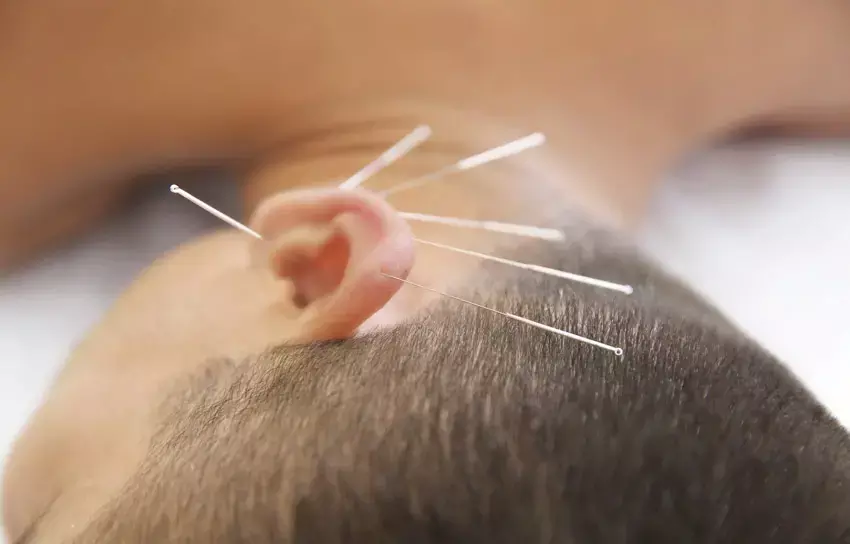- Home
- Medical news & Guidelines
- Anesthesiology
- Cardiology and CTVS
- Critical Care
- Dentistry
- Dermatology
- Diabetes and Endocrinology
- ENT
- Gastroenterology
- Medicine
- Nephrology
- Neurology
- Obstretics-Gynaecology
- Oncology
- Ophthalmology
- Orthopaedics
- Pediatrics-Neonatology
- Psychiatry
- Pulmonology
- Radiology
- Surgery
- Urology
- Laboratory Medicine
- Diet
- Nursing
- Paramedical
- Physiotherapy
- Health news
- Fact Check
- Bone Health Fact Check
- Brain Health Fact Check
- Cancer Related Fact Check
- Child Care Fact Check
- Dental and oral health fact check
- Diabetes and metabolic health fact check
- Diet and Nutrition Fact Check
- Eye and ENT Care Fact Check
- Fitness fact check
- Gut health fact check
- Heart health fact check
- Kidney health fact check
- Medical education fact check
- Men's health fact check
- Respiratory fact check
- Skin and hair care fact check
- Vaccine and Immunization fact check
- Women's health fact check
- AYUSH
- State News
- Andaman and Nicobar Islands
- Andhra Pradesh
- Arunachal Pradesh
- Assam
- Bihar
- Chandigarh
- Chattisgarh
- Dadra and Nagar Haveli
- Daman and Diu
- Delhi
- Goa
- Gujarat
- Haryana
- Himachal Pradesh
- Jammu & Kashmir
- Jharkhand
- Karnataka
- Kerala
- Ladakh
- Lakshadweep
- Madhya Pradesh
- Maharashtra
- Manipur
- Meghalaya
- Mizoram
- Nagaland
- Odisha
- Puducherry
- Punjab
- Rajasthan
- Sikkim
- Tamil Nadu
- Telangana
- Tripura
- Uttar Pradesh
- Uttrakhand
- West Bengal
- Medical Education
- Industry
Management of Upper Airway Atopic Disorders Improves Middle Ear Function, confirms study

Researchers have found in a new study published in Laryngoscope that effective treatment of upper airway atopic diseases greatly enhances middle ear function by decreasing the necessity for pressure equalization tube (PET) insertion. The study used data from the TriNetX Research Network demonstrated that both medical and surgical treatments for asthma, allergic rhinitis, and chronic rhinosinusitis with nasal polyposis produced quantifiable improvements in eustachian tube function.
The research found that the treatments like monoclonal antibody (mAb) therapies, topical nasal steroid sprays, functional endoscopic sinus surgery (FESS), septoplasty with inferior turbinate submucosal resection (BITSMR), and allergy immunotherapy were all linked with reduced PET placements, which implies improved middle ear health. The study was conducted by Lawrence L. and colleagues.
The research was a retrospective cohort analysis carried out via the TriNetX Research Network. Adult patients with upper airway atopic disorders and co-existing eustachian tube dysfunction (ETD) were identified using ICD-10 codes. The study targeted those receiving either medical or surgical treatments for their underlying atopic disease.
Medical therapies involved monoclonal antibody treatments like dupilumab, mepolizumab, and omalizumab, and the application of topical nasal steroids like fluticasone propionate. Surgical procedures performed were functional endoscopic sinus surgery (FESS) and septoplasty with inferior turbinate submucosal resection (BITSMR). Allergy immunotherapy was also considered. The change in the rate of PET placement before and after each procedure was the main outcome measure.
Results
• Analysis was conducted on a large cohort of adult patients with diagnosed upper airway atopic disorders and ETD.
• Functional endoscopic sinus surgery (FESS) had the greatest absolute risk reduction (ARR) in PET placement at 10.0% (p < 0.05, 95% CI 8.9%-11.1%).
• Septoplasty with BITSMR had an ARR of 7.5% (p < 0.05, 95% CI 6.3%-8.7%).
• Amongst the medical therapies, monoclonal antibody therapies as a group recorded an ARR of 5.5% (p < 0.05, 95% CI 4.1%-6.8%), with individual therapy having ARR values of 6.5% for dupilumab (p < 0.05, 95% CI 4.8%-8.3%), 6.8% for mepolizumab (p < 0.05, 95% CI 2.6%-11.0%), and 3.4% for omalizumab (p < 0.05, 95% CI 1.4%-5.4%).
• No meaningful difference between the three mAbs in PET placement rates was, however, observed (p = 0.18).
• Nasal steroid spray (fluticasone propionate) had a small ARR of 0.9% (p < 0.05, 95% CI 0.8%-1.0%), and allergy immunotherapy produced an ARR of 2.4% (p < 0.05, 95% CI 1.5%-3.2%).
Authors observed that medical and surgical management of upper airway atopic disorders was accompanied by notable improvement in middle ear function, reflected by lower pressure equalization tube placement rates. These results emphasize the significance of treating underlying atopic disease in order to maximize outcomes in eustachian tube dysfunction patients. Future clinical practice should account for integrated treatment approaches to maximize both airway and ear health outcomes.
Reference:
Lee L, Bentan MA, Mastoloni E, Schuman TA. Sinonasal Intervention Reduces the Need for Pressure Equalization Tube Placement in Atopic Adults. Laryngoscope. 2025 Apr 23. doi: 10.1002/lary.32207. Epub ahead of print. PMID: 40265713.
Dr Riya Dave has completed dentistry from Gujarat University in 2022. She is a dentist and accomplished medical and scientific writer known for her commitment to bridging the gap between clinical expertise and accessible healthcare information. She has been actively involved in writing blogs related to health and wellness.
Dr Kamal Kant Kohli-MBBS, DTCD- a chest specialist with more than 30 years of practice and a flair for writing clinical articles, Dr Kamal Kant Kohli joined Medical Dialogues as a Chief Editor of Medical News. Besides writing articles, as an editor, he proofreads and verifies all the medical content published on Medical Dialogues including those coming from journals, studies,medical conferences,guidelines etc. Email: drkohli@medicaldialogues.in. Contact no. 011-43720751


